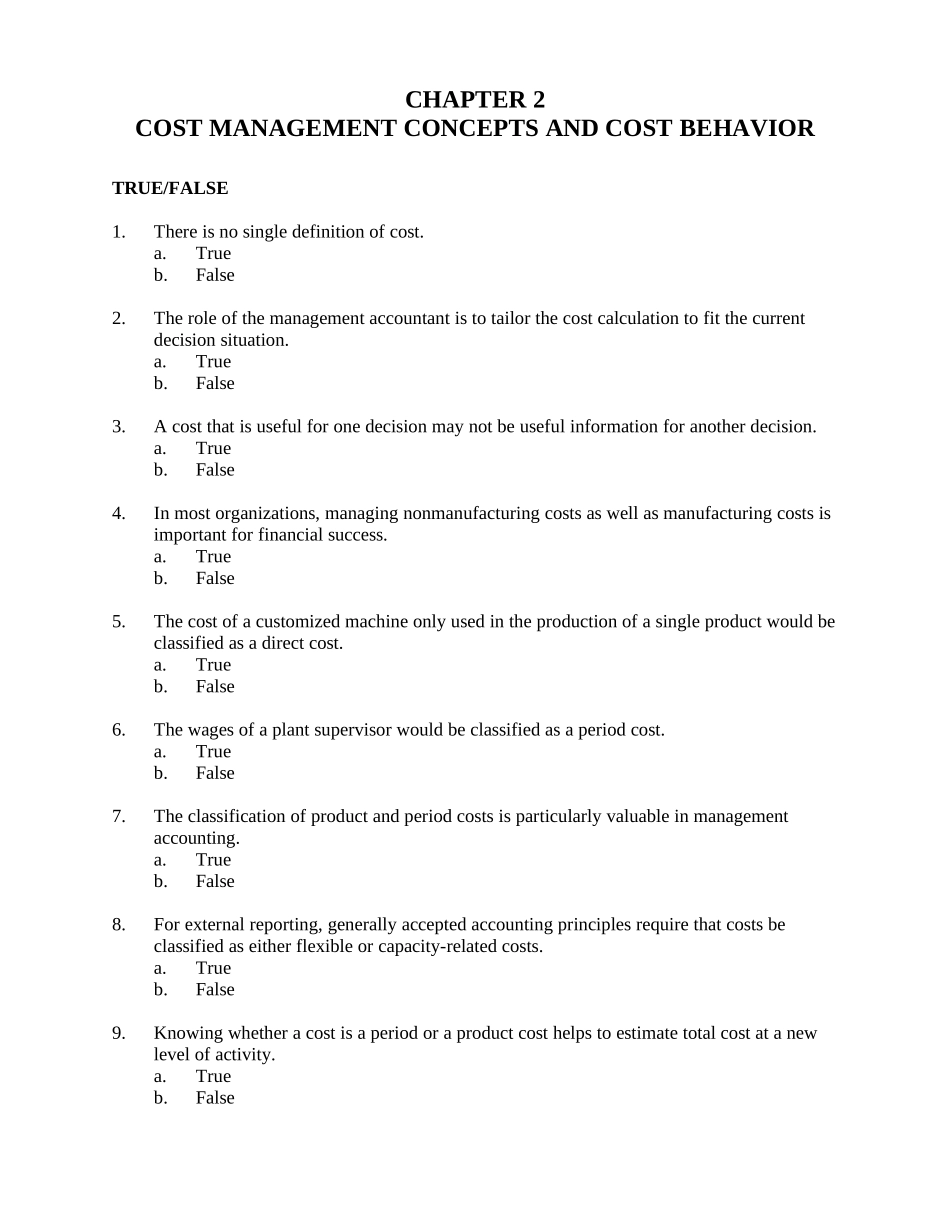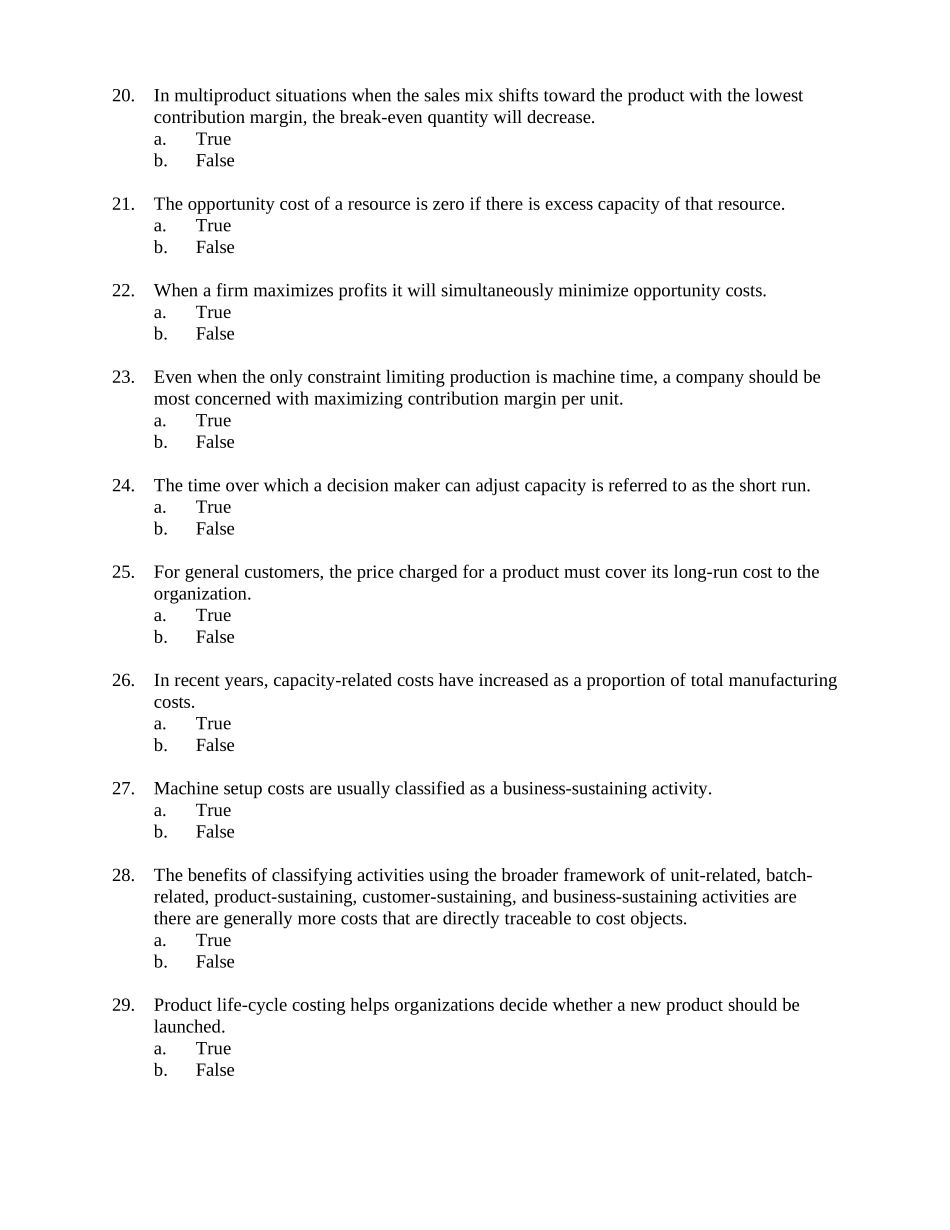CHAPTER 2COST MANAGEMENT CONCEPTS AND COST BEHAVIORTRUE/FALSE1.There is no single definition of cost.a.Trueb.False2.The role of the management accountant is to tailor the cost calculation to fit the current decision situation.a.Trueb.False3.A cost that is useful for one decision may not be useful information for another decision.a.Trueb.False4.In most organizations, managing nonmanufacturing costs as well as manufacturing costs is important for financial success.a.Trueb.False5.The cost of a customized machine only used in the production of a single product would be classified as a direct cost.a.Trueb.False6.The wages of a plant supervisor would be classified as a period cost.a.Trueb.False7.The classification of product and period costs is particularly valuable in management accounting.a.Trueb.False8.For external reporting, generally accepted accounting principles require that costs be classified as either flexible or capacity-related costs.a.Trueb.False9.Knowing whether a cost is a period or a product cost helps to estimate total cost at a new level of activity.a.Trueb.False10.Flexible costs are always direct costs.a.Trueb.False11.Capacity-related costs vary with the level of production or sales volume.a.Trueb.False12.Currently, most personnel costs are classified as capacity-related costs.a.Trueb.False13.Some capacity-related costs might be classified as direct manufacturing costs.a.Trueb.False14.Capacity-related costs depend on the resources used, not the resources acquired.a.Trueb.False15.Break-even point is NOT an important concept since the goal of business is to make a profit.a.Trueb.False16.To perform cost-volume-profit analysis, a company must be able to separate costs into capacity-related and flexible components.a.Trueb.False17.Cost-volume-p...


